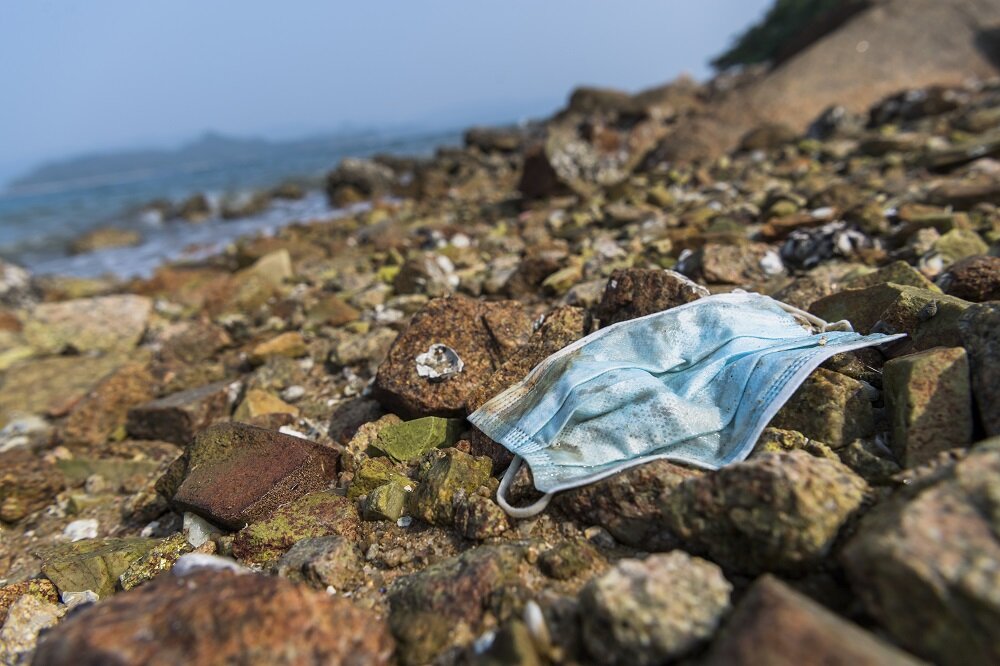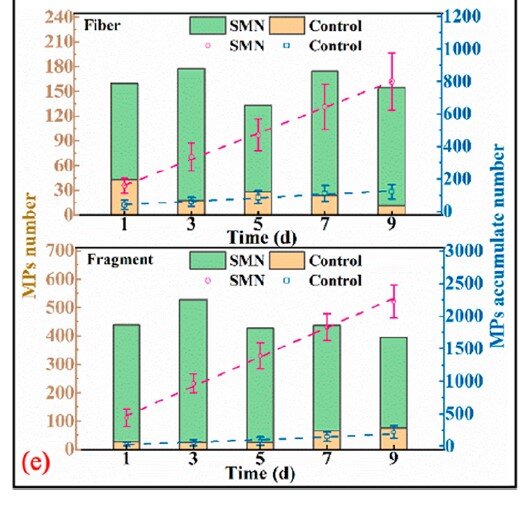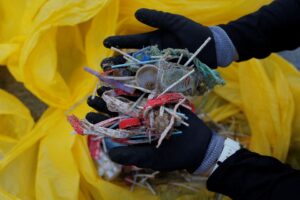Discarded surgical masks are a ticking time bomb for ecosystems

Researchers from City University of Hong Kong (CityU) have found that the inappropriate disposal of surgical masks can cause serious microplastic pollution, equivalent to polluting more than 54,800 Olympic-sized swimming pools of seawater annually.
The masks, which have been widely used to help protect against the spread of coronavirus during the pandemic, could potentially affect the growth and reproduction of marine organisms and ecosystems if left inappropriately disposed of.
The research team was led by Dr. Henry He Yuhe, assistant professor in CityU’s School of Energy and Environment (SEE) and a member of the State Key Laboratory of Marine Pollution (SKLMP). Dr. He Yuhe and his team collected discarded surgical masks from a beach in Hong Kong to investigate the release of microplastics from polypropylene surgical masks in seawater.
The findings were published in the academic journal Environmental Science and Technology Letters, titled Release of Microplastics from Discarded Surgical Masks and Their Adverse Impacts on the Marine Copepod Tigriopus japonicus.
The study set out: ‘It is estimated that the global demand for face masks reached 129 billion per month by 2020. However, due to the lack of proper collection, disposal, and management policy, the increased consumption and inappropriate disposal of masks could lead to a massive release of hazardous materials into the coastal environment by direct discarding, drainage, river flows, or surface runoff, causing a new environmental challenge. It is estimated that a total of 1.56 billion masks were released into the oceans in 2020.’
The study found that microplastics (MPs) released from surgical masks (SMs) ‘can also act as a vector of other pollutants (e.g., plasticisers) in the marine environment and might cause a cumulative effect on marine organisms. All of these related ecotoxicological consequences will require more attention and further study of ecological risk assessments of the MPs released from SMs. The results of this study indicate an urgent need to minimise the risk of this emerging threat through better environmental management, policy, and law enforcement for ensuring proper disposal of SMs worldwide.’
“This amount of microplastics can seriously pollute 137 million cubic meters of seawater, which is equivalent to filling up more than 54,800 Olympic swimming pools,” Dr. He Yuhe told Phys.org.
“Polypropylene (PP) is the main material widely used in surgical masks,” he explains. “It is a kind of commodity plastic that can break down under the effects of heat, wind, ultraviolet radiation, and ocean currents, eventually forming microplastics.
“I believe this problem will continue for many years in the post-pandemic era.”
The team conducted experiments in the laboratory to mimic the natural process of microplastics being released from discarded masks. They soaked the masks in a bottle with artificial seawater and shook them continuously using a mechanical shaker for nine days. Under a microscope, they observed significant damage to the mask fibers.

The team discovered that a mask weighing about 3g released around 3,000 microplastics. They estimated that 0.88 million to 1.17 million microplastics would be released during a mask’s complete decomposition.
The team also evaluated the chronic toxicity of microplastics on copepods (Tigriopus japonicus), a small marine crustacean. In their experiment, the copepods were exposed to artificial seawater where the microplastics were ingested and accumulated in the intestines of the marine copepods. Compared to copepods not exposed to microplastics, the reproduction fecundity of those that were exposed to 100 microplastics per ml was reduced by up to 22 per cent, and the maturation development time was 5.6 per cent longer.
One of the most abundant classes of zooplankton and the main food source of other small animals in the marine environment, copepods play a critical role in the bioaccumulation of contaminants in the food chain. Higher-level marine organisms, such as fish and shrimps, can then ingest microplastics if they consume these polluted copepods.

The upper image shows fluorescent-dyed microplastics in the intestines of copepods after exposure. The lower image shows a copepod that has not been exposed to microplastics, with no microplastics in the intestine.
The higher the animals are in the food chain, the more microplastics accumulate, resulting in potentially harmful effects. In addition, the reduced fecundity of copepods can lead to a reduction in food resources for higher marine organisms, threatening the balance of the marine ecosystem.
Last month, MIN reported that according to a new report, the amount of plastic could ‘far exceed’ the weight of fish by 2050.











